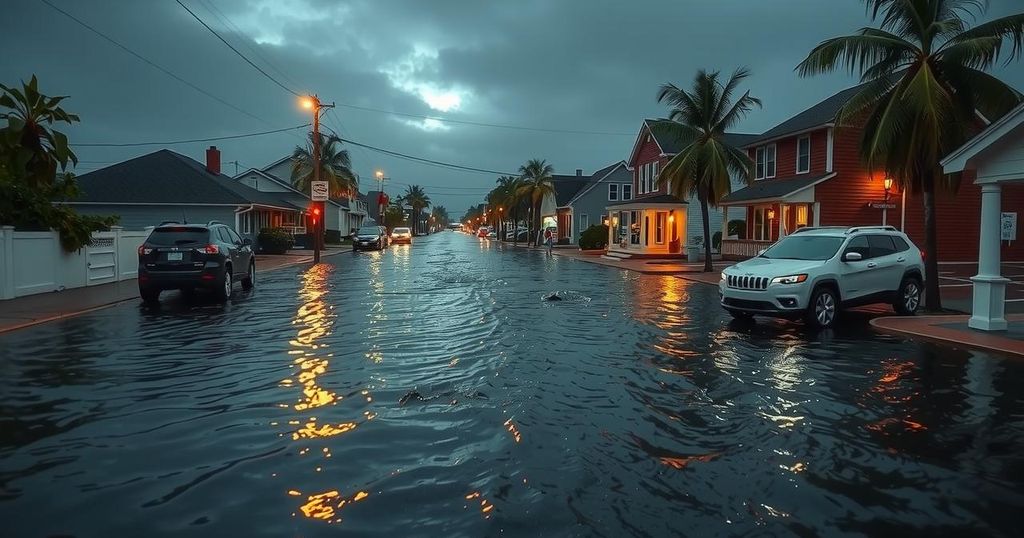Storm Causes Historic Flooding in Spain: NOAA Satellite Observations
On October 30, 2024, a severe storm captured by the NOAA-20 satellite caused unprecedented flooding in Spain, particularly in eastern and southeastern regions. Some areas received a year’s worth of rain in eight hours, leading to significant infrastructural damage and prompting an emergency alert in Valencia. The satellite’s VIIRS instrument played a crucial role in monitoring this extreme weather event as part of NOAA’s advanced satellite system, aimed at improving environmental and meteorological observations.
On October 30, 2024, the NOAA-20 satellite captured a remarkable image of a severe storm that caused unprecedented rainfall across Spain. This weather system, noted for also carrying Saharan dust from Africa, resulted in extensive flooding primarily in eastern and southeastern regions of the country. Meteorologists reported that some localities experienced nearly an entire year’s worth of rainfall within an astonishing eight-hour period. The deluge caused significant destruction, sweeping away infrastructure including bridges and buildings, and making highways impassable. Due to these extreme conditions, Spain’s meteorological agency issued an emergency alert for the coastal area of Valencia, which recorded its highest rainfall in 24 years. The image was obtained using the Visible Infrared Imaging Radiometer Suite (VIIRS) instrument aboard the NOAA-20 satellite, which has the capability to scan the Earth twice daily at a resolution of 750 meters. This advanced technology utilizes various visible and infrared channels to identify atmospheric aerosols such as dust, smoke, and haze, which are indicative of industrial activity and natural phenomena. The polar-orbiting spacecraft orbits the planet fourteen times each day, providing a comprehensive daytime view of Earth every 24 hours. It merges the images captured during each orbit to produce extensive mosaics, like the one featured in this instance. The NOAA-20 satellite is part of the Joint Polar Satellite System (JPSS), which also includes NOAA-21 and the NOAA/NASA Suomi NPP satellite. JPSS represents significant technological progress in the monitoring of environmental conditions and predictions of severe weather events. This collaboration between NOAA and NASA enhances the accuracy and timeliness of forecasts spanning three to seven days ahead of potential severe weather incidents.
The extreme weather event described involved a severe storm that impacted Spain, resulting in record-breaking rainfall and significant flooding. Such meteorological phenomena are typically monitored by satellite technology, which captures images and data critical for understanding atmospheric conditions and predicting weather-related disasters. The NOAA-20 satellite, utilizing the VIIRS instrument, provides valuable imagery and data that aid in environmental monitoring, thus contributing to improved weather forecasting and disaster preparedness.
In summary, the NOAA-20 satellite’s capture of a severe storm over Spain highlights the destructive power of extreme weather events, evidenced by record rainfall and subsequent flooding. The advanced satellite technology enables meteorologists to better understand and predict such events, ultimately enhancing public safety measures through timely alerts and accurate forecasting. The ongoing collaboration between NOAA and NASA further underscores the importance of sophisticated observation systems in weather prediction and environmental monitoring.
Original Source: www.nesdis.noaa.gov




Post Comment